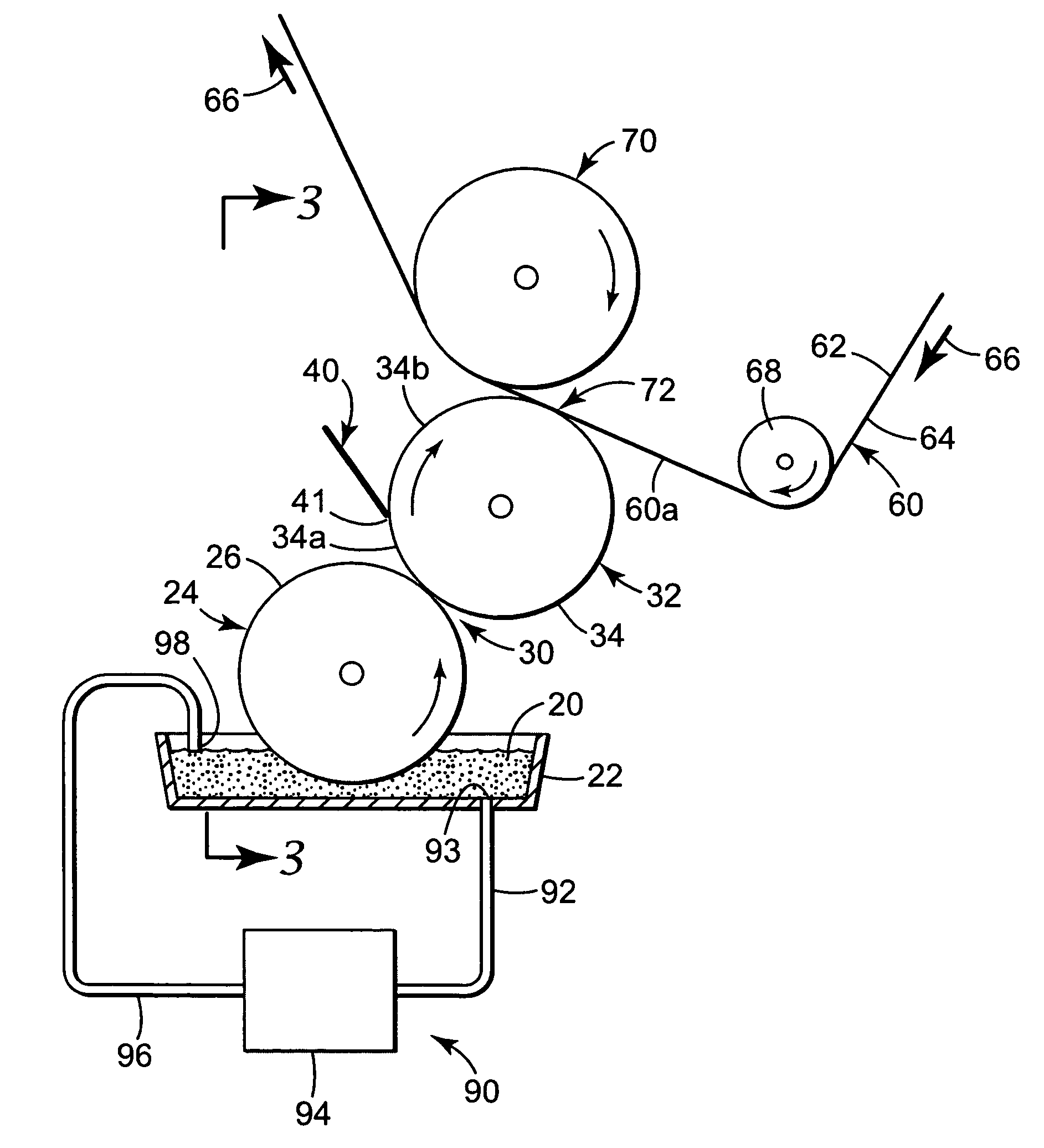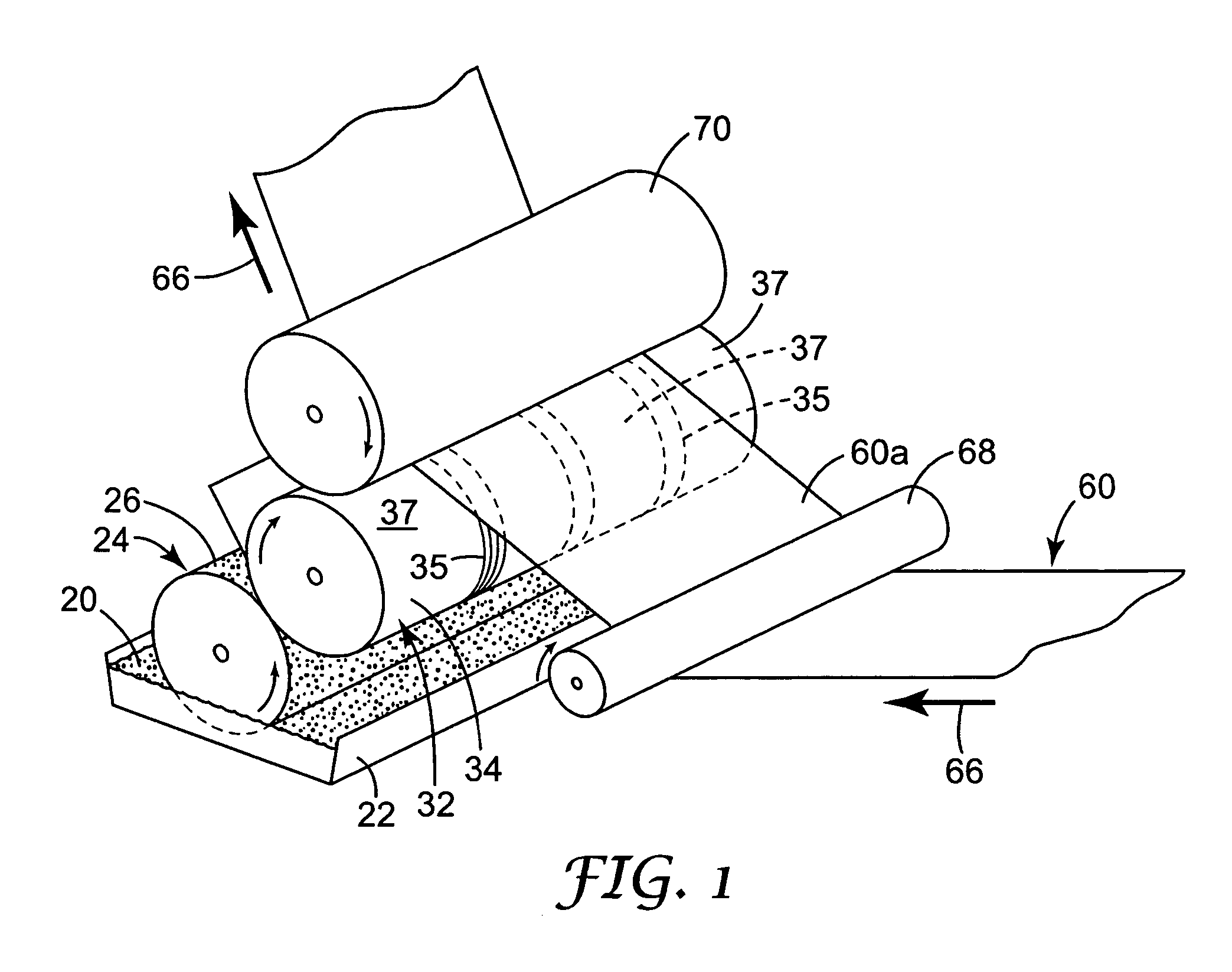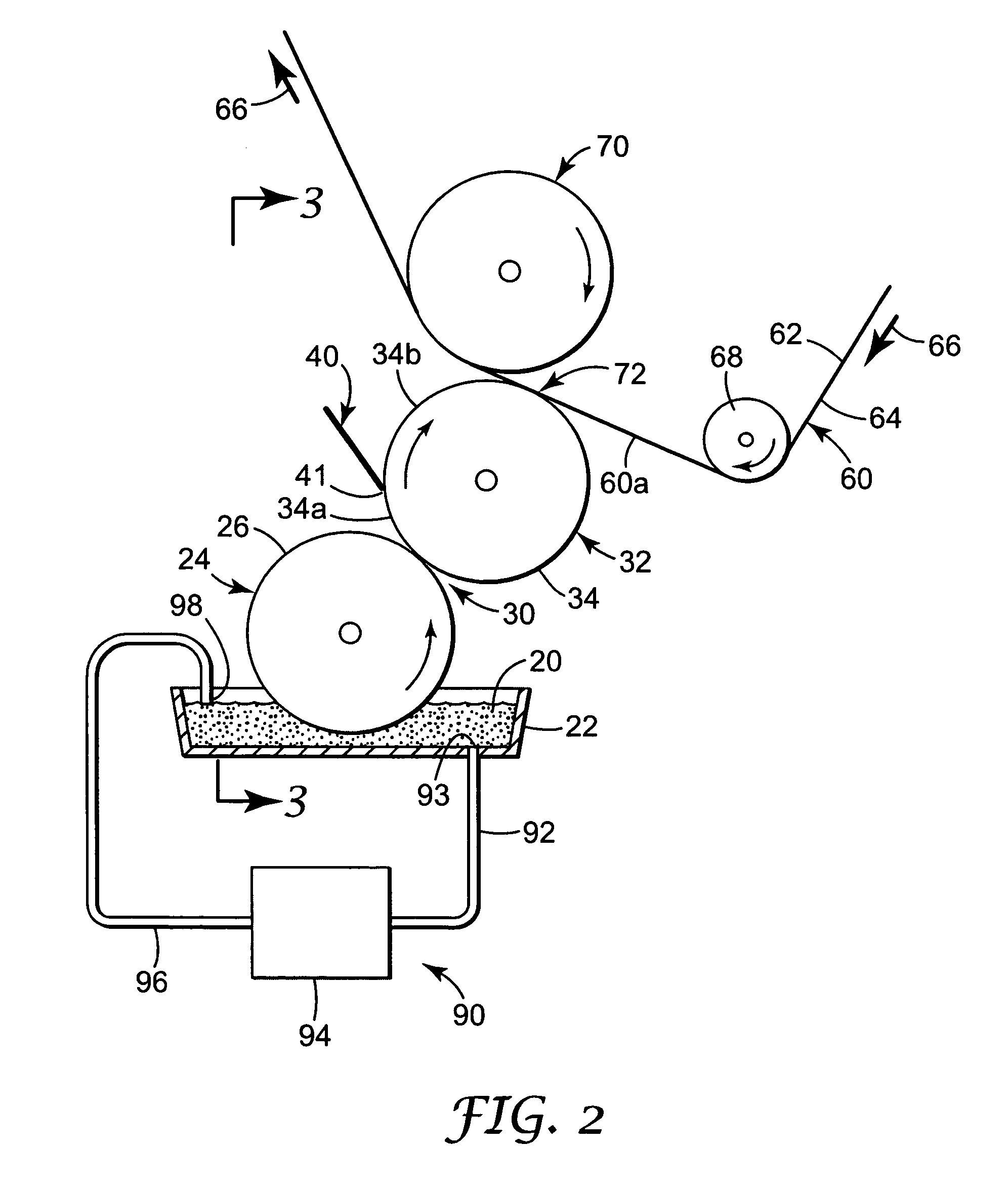Method for defining a coating fluid pattern
a coating fluid and pattern technology, applied in the direction of liquid/solution decomposition chemical coating, superimposed coating process, non-fibrous pulp addition, etc., can solve the problems of undue splitting, difficult to handle the coating material and form a uniform layer on the substrate, and the goal of asymmetrical coating
- Summary
- Abstract
- Description
- Claims
- Application Information
AI Technical Summary
Benefits of technology
Problems solved by technology
Method used
Image
Examples
Embodiment Construction
[0019] Applicants have discovered and developed a unique apparatus and process for selectively applying a down-web pattern of coating fluid onto a moving web. This pattern, in its simplest form, may comprise a single stripe of coating fluid deposited on the moving web or a plurality of parallel stripes applied along the length of the moving web. In addition, the pattern can be continuously applied to the moving web (i.e., a continuous stripe or plurality of stripes of coating fluid), or the application of the pattern can be stopped all together even though the web continues to move past the inventive coating apparatus. In addition, the apparatus can be configured to apply an intermittent pattern of coating fluid to the web (i.e., a discontinuous strip of coating fluid applied along the length of the moving web, such as “dashes” or blocks of coating fluid).
[0020] Alternative methods and apparatus for achieving these ends are disclosed herein. In each instance, the coating fluid is h...
PUM
| Property | Measurement | Unit |
|---|---|---|
| angle | aaaaa | aaaaa |
| diameter | aaaaa | aaaaa |
| depth | aaaaa | aaaaa |
Abstract
Description
Claims
Application Information
 Login to View More
Login to View More - R&D
- Intellectual Property
- Life Sciences
- Materials
- Tech Scout
- Unparalleled Data Quality
- Higher Quality Content
- 60% Fewer Hallucinations
Browse by: Latest US Patents, China's latest patents, Technical Efficacy Thesaurus, Application Domain, Technology Topic, Popular Technical Reports.
© 2025 PatSnap. All rights reserved.Legal|Privacy policy|Modern Slavery Act Transparency Statement|Sitemap|About US| Contact US: help@patsnap.com



